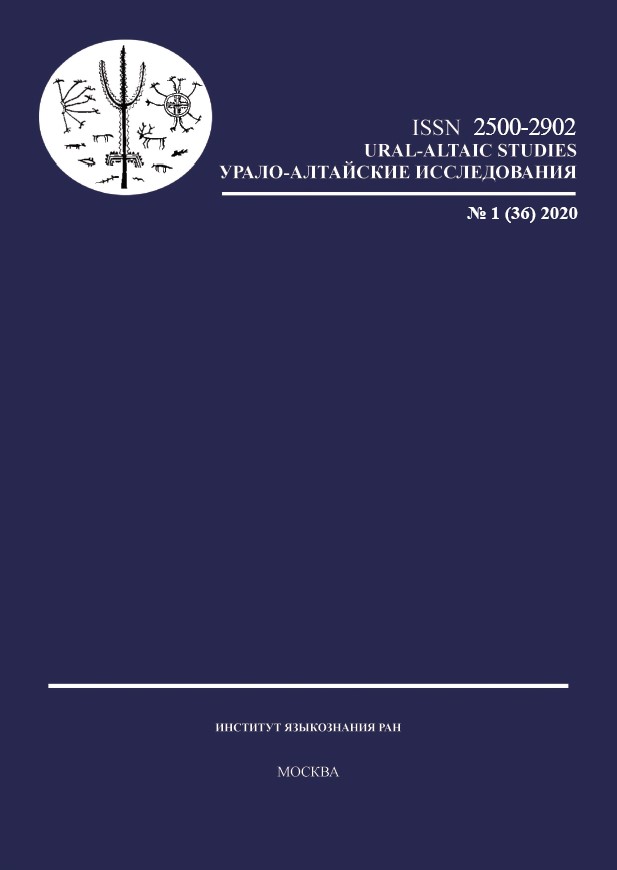К ОСОБЕННОСТЯМ ПЕРЕВОДА «ЗАКОНА БОЖИЯ» (1912 Г.) НА УДМУРТСКИЙ ЯЗЫК: ИМЕННАЯ МОРФОЛОГИЯ
THE PECULIARITIES OF THE TRANSLATION OF “GOD’S LAWˮ (1912) INTO UDMURT: NOUN MORPHOLOGY
Author(s): Maria P. BezenovaSubject(s): Theoretical Linguistics, Phonetics / Phonology, Morphology, Pre-WW I & WW I (1900 -1919), Philology, Translation Studies
Published by: Институт языкознания Российской академии наук
Keywords: the Udmurt language; dialectology; the monuments of literature; nominal morphology;
Summary/Abstract: This article examines the nominal morphologic characteristics of the translation of “God’s Law” into the Udmurt language. The relevance of the study lies in the fact that Udmurt written monuments have not yet been thoroughly studied. Thus far more than 400 prerevolutionary Udmurt monuments have been found, but most of them have not been described. It is necessary to analyze those written monuments, as they provide important information for language reconstruction and help determine the chronology of linguistic phenomena. The description of morphological characteristics in the article is based on previously identified graphic and phonetic features of the translation of “God’s Law” into Udmurt. Its linguistic material is compared with data from literary language and modern Udmurt dialects. Having analysed “God’s Law” in the Udmurt language, some features were revealed in the design of morphological indicators of the plural, possessiveness and some case forms. However, in general, the analysis showed that at the level of nominal morphology the text is archaic in character, as only three features that distinguish the language of the monument from the literary Udmurt language and most modern dialects were identified. A comparison of the linguistic data of “God’s Law” with the literary language and modern Udmurt dialects does not contradict our hypothesis regarding the dialectic affiliation of the written source, when it is considered that all of the identified innovative features are present in the modern Middle-Cheptsa dialect of the northern dialect of the Udmurt language.
Journal: Урало-алтайские исследования
- Issue Year: 2020
- Issue No: 01 (36)
- Page Range: 53-70
- Page Count: 18
- Language: Russian

